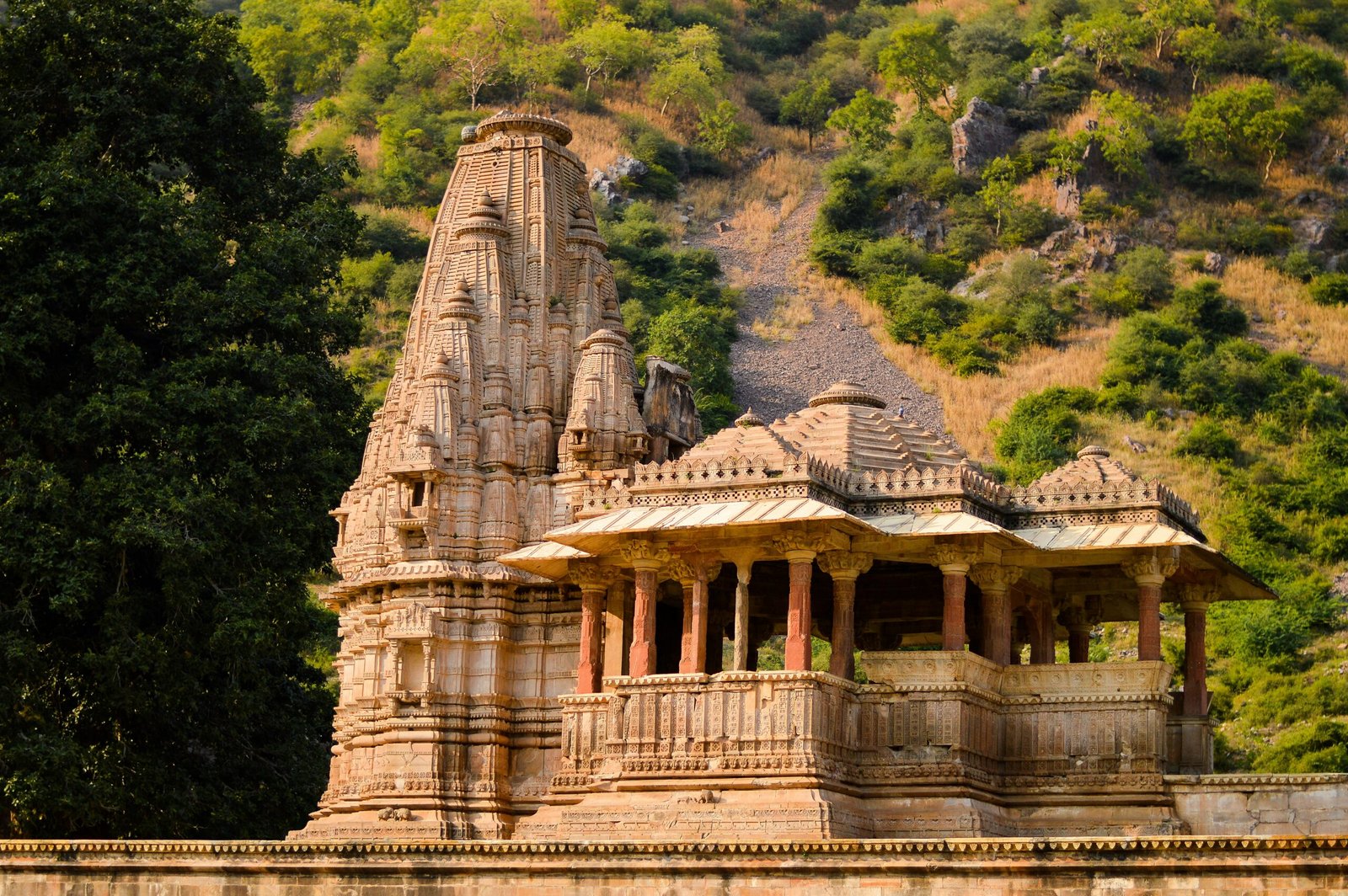Exploring India’s Sacred Heritage: Must-Visit Temples Across the Country
Exploring India’s Sacred Heritage: Must-Visit Temples Across the Country
India, a land of diverse cultures, ancient traditions, and rich spiritual history, is home to numerous temples that not only serve as places of worship but also as architectural marvels. Each temple carries its unique story, history, and a reflection of the cultural heritage of the region it belongs to. From grand, awe-inspiring structures to smaller, serene shrines nestled in nature, here’s a journey through some of the most iconic temples in India, each bearing its resemblance to different aspects of Indian culture, beliefs, and history.
1. Akshardham Temple – Delhi
- Resemblance: Spiritual Harmony and Cultural Grandeur
- Temple Type: Hindu
- Key Features: The Akshardham Temple in Delhi is a modern architectural wonder that reflects India’s spiritual grandeur and cultural heritage. Its central deity, Lord Swaminarayan, is revered here, and the temple features intricate carvings depicting various Hindu deities and mythological tales.
- What Sets It Apart: The temple is not just about its majestic central dome but also its exhibitions, which showcase the history of India’s ancient art, culture, and spirituality. The grandiosity and opulence resemble the spiritual harmony between ancient Indian traditions and modern-day values.
2. Kashi Vishwanath Temple – Varanasi
- Resemblance: Timelessness and Spiritual Significance
- Temple Type: Hindu
- Key Features: One of the holiest temples in India, Kashi Vishwanath is dedicated to Lord Shiva and has been an essential part of the spiritual landscape of India for centuries. Located in Varanasi, one of the world’s oldest living cities, the temple’s history stretches back over a thousand years.
- What Sets It Apart: The temple, with its golden spire, is closely linked to the essence of life and death in Hindu beliefs. The Kashi Vishwanath Temple stands as a symbol of the cyclical nature of existence, drawing parallels to the eternal flow of life on the banks of the sacred Ganges River.
3. Meenakshi Temple – Madurai
- Resemblance: Divine Feminine Power and Artistic Brilliance
- Temple Type: Hindu
- Key Features: Located in Madurai, the Meenakshi Temple is dedicated to Goddess Meenakshi (a form of Parvati) and her consort, Lord Sundareswarar (Shiva). The temple’s towering gopurams (gateway towers) are decorated with intricately sculpted figures of deities and mythological beings.
- What Sets It Apart: The temple’s elaborate design, vibrant colors, and the central role of the goddess reflect the reverence for the feminine divine in South India. The temple symbolizes not just religious devotion but also artistic excellence, reminiscent of the flourishing Dravidian architectural style.
4. Jagannath Temple – Puri
- Resemblance: Community and Faith
- Temple Type: Hindu
- Key Features: The Jagannath Temple is dedicated to Lord Jagannath (a form of Krishna), his brother Balabhadra, and sister Subhadra. It is a key pilgrimage site for millions of devotees who participate in the annual Rath Yatra (chariot festival).
- What Sets It Apart: The temple, with its massive chariot procession, embodies the deep sense of community, unity, and devotion that is central to the temple’s significance. The large wooden idols of Lord Jagannath, Balabhadra, and Subhadra are symbolic of the divine’s connection with the masses, highlighting inclusivity and accessibility.
5. Golden Temple – Amritsar
- Resemblance: Universal Peace and Equality
- Temple Type: Sikh
- Key Features: The Golden Temple (Harmandir Sahib) is the holiest shrine for Sikhs, and it represents the core values of Sikhism—equality, humility, and service. The temple is famed for its stunning golden façade and is surrounded by a serene holy lake.
- What Sets It Apart: The temple’s architecture and the spiritual atmosphere around it resonate with the idea of peace and equality for all. The Golden Temple is a powerful symbol of universal brotherhood and the Sikh principle of ‘seva’ (selfless service), making it a beacon of inclusivity.
6. Brihadeeswarar Temple – Thanjavur
- Resemblance: Architectural Grandeur and Royal Patronage
- Temple Type: Hindu
- Key Features: The Brihadeeswarar Temple, also known as the Big Temple, is dedicated to Lord Shiva and is a UNESCO World Heritage site. Built during the Chola dynasty in the 11th century, this architectural marvel showcases the grandiosity and power of the Chola kings.
- What Sets It Apart: The temple’s massive dome, carved out of a single stone, and its towering gopuram, symbolize the strength and vision of the Chola rulers. It resembles the idea of divine kingship, where the temple’s grandeur is a reflection of the divine and royal authority coexisting.
7. Somnath Temple – Saurashtra
- Resemblance: Resilience and Faith
- Temple Type: Hindu
- Key Features: Situated in the coastal town of Prabhas Patan in Gujarat, the Somnath Temple is one of the twelve Jyotirlingas (sacred shrines dedicated to Lord Shiva). The temple has been rebuilt multiple times after being destroyed by invaders, yet it continues to stand as a symbol of unwavering faith.
- What Sets It Apart: The Somnath Temple embodies resilience in the face of adversity, symbolizing the triumph of faith and hope. Its coastal location, where the land meets the ocean, reflects the continuity of spiritual practice despite external challenges.
8. Kailasa Temple – Ellora
- Resemblance: Art and Architectural Marvel
- Temple Type: Hindu
- Key Features: The Kailasa Temple at Ellora Caves is one of the most extraordinary rock-cut temples in the world. Carved from a single monolithic rock, it is dedicated to Lord Shiva and is a monumental example of ancient Indian rock-cut architecture.
- What Sets It Apart: The Kailasa Temple’s creation out of one single stone represents the incredible ingenuity of ancient builders and their devotion to the divine. Its resemblance to the mountain Kailash, considered the abode of Lord Shiva, makes it a remarkable representation of divine power and architectural brilliance.
9. Virupaksha Temple – Hampi
- Resemblance: Ancient Royalty and Divine Majesty
- Temple Type: Hindu
- Key Features: The Virupaksha Temple is dedicated to Lord Shiva and is located in the UNESCO World Heritage site of Hampi. The temple was built during the Vijayanagara Empire, and it showcases the grandeur and splendor of the dynasty.
- What Sets It Apart: The temple’s intricate carvings and its grand scale reflect the magnificence of the Vijayanagara Empire and its dedication to Lord Shiva. The surrounding ruins further enhance the resemblance to royal devotion and the intersection of politics and religion.
10. Temples of Khajuraho – Madhya Pradesh
- Resemblance: Art, Architecture, and Erotic Sculptures
- Temple Type: Hindu and Jain
- Key Features: The Khajuraho group of temples is famous for its intricate erotic sculptures, alongside depictions of gods, celestial beings, and daily life. The temples are known for their architectural beauty and rich artistic expressions.
- What Sets It Apart: These temples embody the celebration of life in all its forms, including love and sensuality, which were seen as divine acts in ancient India. The temples resemble the idea of human existence being a balance of spirituality and physicality.



